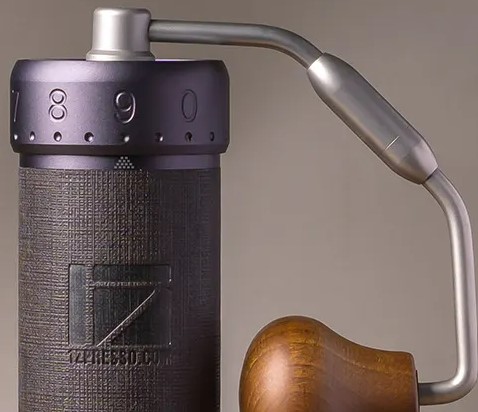Master the Art of Grinding Coffee Beans: A Guide to Coffee Grinders
For coffee fanatics, the process of grinding coffee beans is even more than just a routine task; it is an art form that can substantially influence the taste and top quality of the final brew. Recognizing the subtleties of various grinder types, selecting the ideal work dimension, and using the right strategies are important steps in the direction of achieving that best mug of coffee.
Kinds Of Coffee Grinders
There are 3 key kinds of coffee mills typically used by coffee fanatics: blade mills, burr mills, and hand-operated grinders. Blade grinders are one of the most standard kind, utilizing an easy blade to cut the coffee beans. While they are budget friendly and very easy to make use of, they commonly cause unequal coffee premises due to inconsistent grinding. Burr mills, on the other hand, offer even more accuracy by crushing the beans between a moving grinding wheel and a non-moving surface area. This causes a consistent grind dimension, which is important for a regular coffee taste. Burr grinders are available in both level and conelike forms, each offering a little various grinding attributes.
Hands-on grinders, as the name recommends, call for manual effort to grind the coffee beans. They are usually preferred by those who take pleasure in the process of hand brewing coffee or for those that value mobility. Hands-on grinders can differ in layout, from simple handheld designs to extra complex counter top versions. While they might require even more effort, hands-on grinders provide control over the grinding procedure, enabling customers to adjust the grind size to their preference. Each kind of coffee mill has its advantages and ideal use instances, satisfying the diverse choices of coffee lovers.

Choosing the Right Work Size
With an understanding of the different types of coffee mills, the next crucial step in achieving the ideal mug of coffee is picking the right work size. The work dimension plays a significant duty in figuring out the taste account of your coffee (1Zpresso J-Max). Various developing techniques need certain grind dimensions to maximize the extraction of flavors from the coffee premises
For a crude work, suitable for French press and cool mixture methods, the coffee beans should resemble breadcrumbs, providing a robust and strong flavor. Medium-coarse grinds, ideal for Chemex or Clever Dripper, have an appearance similar to rugged sand, providing a well balanced preference.
Medium grinds, often used in drip coffee machine, have an uniformity looking like routine sand, causing a well-shaped flavor. Great grinds, best for coffee equipments, belong to common salt, great post to read producing an abundant and intense preference. Ultimately, extra-fine grinds, utilized in Turkish coffee, are as fine as powdered sugar and create a solid and potent brew.
Grinding Methods for Ideal Taste
To remove the maximum potential of taste from your coffee beans, grasping appropriate grinding methods is crucial. Consistency is key when it pertains to grinding coffee beans for optimum taste. Ensuring that the coffee beans are ground equally is important to achieve a well balanced extraction throughout the developing procedure. One of the basic techniques for enhancing flavor is to change the work dimension based on the developing approach being utilized. For instance, a fine work is excellent for espresso makers, while a crude grind is better for French press developing. Furthermore, the grinding time plays a significant function in flavor removal. Over-grinding can bring about a bitter preference, while under-grinding might result in a sour taste. It is suggested to try out various work sizes and developing times to discover the best balance that matches your preference preferences. By taking notice of these grinding strategies, you can raise the taste account of your coffee and appreciate an extra satisfying mug each time.
Upkeep and Cleansing Tips

Replace any worn-out parts without delay to maintain the quality of your coffee grind. By complying with these upkeep and cleaning pointers, you can make certain that your coffee mill continues to supply tasty fresh ground coffee for years to come.
Troubleshooting Common Mill Issues


Ensuring your coffee grinder works smoothly needs experienced troubleshooting of typical problems that may develop during its usage. One typical issue with coffee mills is inconsistent grind size.
An additional regular issue is grinder clogging. This can occur when oils from the coffee beans accumulate and obstruct the mill's chute. To solve this, disassemble the mill and clean all components extensively, paying special focus to the chute and burrs. find more Additionally, be mindful of overfilling the hopper to prevent obstructions.
Finally, if your mill is creating too much sound throughout procedure, it can indicate a trouble with the motor or inner parts. In such situations, it is advisable to get in touch with the supplier's instructions for fixing steps or look for specialist Learn More help to identify and rectify the problem without delay.
Conclusion
Finally, grasping the art of grinding coffee beans includes recognizing the different kinds of coffee grinders, selecting the ideal grind dimension, using proper grinding methods for optimal taste, and maintaining and cleaning the grinder routinely. By adhering to these guidelines and troubleshooting usual grinder issues, coffee enthusiasts can boost their coffee developing experience and delight in a delicious mug of coffee every time.